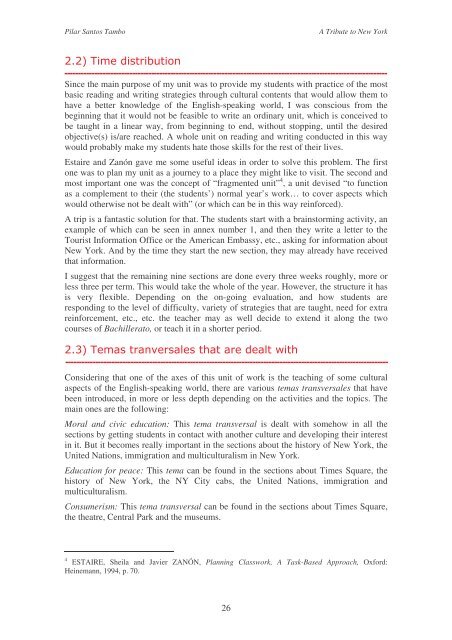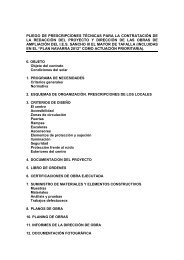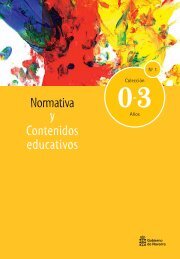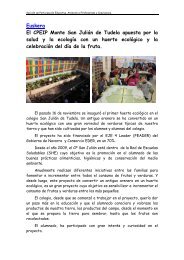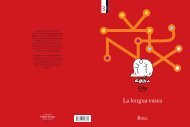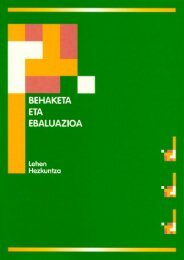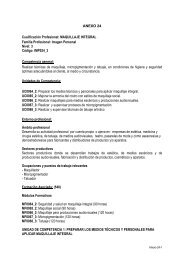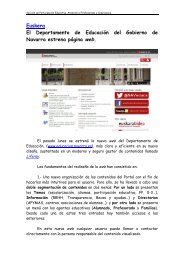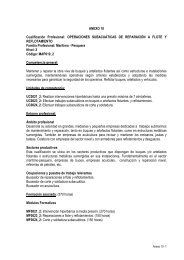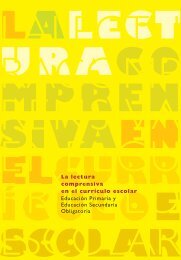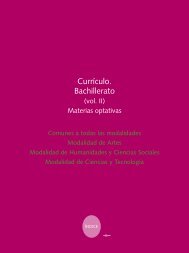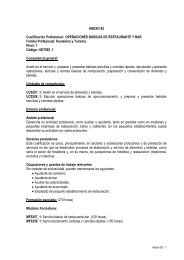A Tribute to New York - Navarra
A Tribute to New York - Navarra
A Tribute to New York - Navarra
You also want an ePaper? Increase the reach of your titles
YUMPU automatically turns print PDFs into web optimized ePapers that Google loves.
Pilar San<strong>to</strong>s Tambo A <strong>Tribute</strong> <strong>to</strong> <strong>New</strong> <strong>York</strong><br />
07 -0 ,08.0<br />
Since the main purpose of my unit was <strong>to</strong> provide my students with practice of the most<br />
basic reading and writing strategies through cultural contents that would allow them <strong>to</strong><br />
have a better knowledge of the English-speaking world, I was conscious from the<br />
beginning that it would not be feasible <strong>to</strong> write an ordinary unit, which is conceived <strong>to</strong><br />
be taught in a linear way, from beginning <strong>to</strong> end, without s<strong>to</strong>pping, until the desired<br />
objective(s) is/are reached. A whole unit on reading and writing conducted in this way<br />
would probably make my students hate those skills for the rest of their lives.<br />
Estaire and Zanón gave me some useful ideas in order <strong>to</strong> solve this problem. The first<br />
one was <strong>to</strong> plan my unit as a journey <strong>to</strong> a place they might like <strong>to</strong> visit. The second and<br />
most important one was the concept of “fragmented unit” 4 , a unit devised “<strong>to</strong> function<br />
as a complement <strong>to</strong> their (the students’) normal year’s work… <strong>to</strong> cover aspects which<br />
would otherwise not be dealt with” (or which can be in this way reinforced).<br />
A trip is a fantastic solution for that. The students start with a brains<strong>to</strong>rming activity, an<br />
example of which can be seen in annex number 1, and then they write a letter <strong>to</strong> the<br />
Tourist Information Office or the American Embassy, etc., asking for information about<br />
<strong>New</strong> <strong>York</strong>. And by the time they start the new section, they may already have received<br />
that information.<br />
I suggest that the remaining nine sections are done every three weeks roughly, more or<br />
less three per term. This would take the whole of the year. However, the structure it has<br />
is very flexible. Depending on the on-going evaluation, and how students are<br />
responding <strong>to</strong> the level of difficulty, variety of strategies that are taught, need for extra<br />
reinforcement, etc., etc. the teacher may as well decide <strong>to</strong> extend it along the two<br />
courses of Bachillera<strong>to</strong>, or teach it in a shorter period.<br />
72 ,2 4 ,23 12 2, - 23601<br />
Considering that one of the axes of this unit of work is the teaching of some cultural<br />
aspects of the English-speaking world, there are various temas transversales that have<br />
been introduced, in more or less depth depending on the activities and the <strong>to</strong>pics. The<br />
main ones are the following:<br />
Moral and civic education: This tema transversal is dealt with somehow in all the<br />
sections by getting students in contact with another culture and developing their interest<br />
in it. But it becomes really important in the sections about the his<strong>to</strong>ry of <strong>New</strong> <strong>York</strong>, the<br />
United Nations, immigration and multiculturalism in <strong>New</strong> <strong>York</strong>.<br />
Education for peace: This tema can be found in the sections about Times Square, the<br />
his<strong>to</strong>ry of <strong>New</strong> <strong>York</strong>, the NY City cabs, the United Nations, immigration and<br />
multiculturalism.<br />
Consumerism: This tema transversal can be found in the sections about Times Square,<br />
the theatre, Central Park and the museums.<br />
4 ESTAIRE, Sheila and Javier ZANÓN, Planning Classwork, A Task-Based Approach, Oxford:<br />
Heinemann, 1994, p. 70.<br />
26


